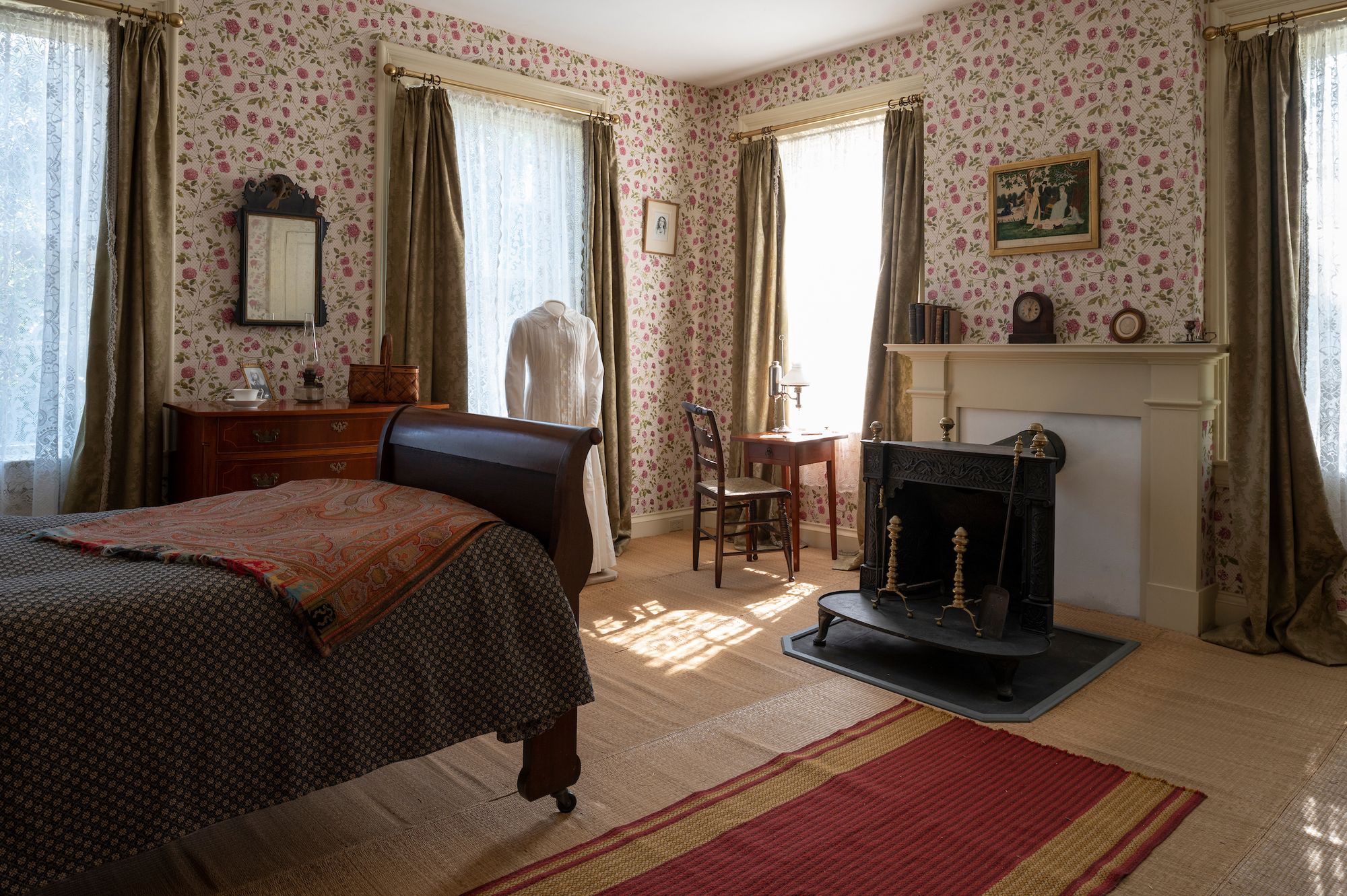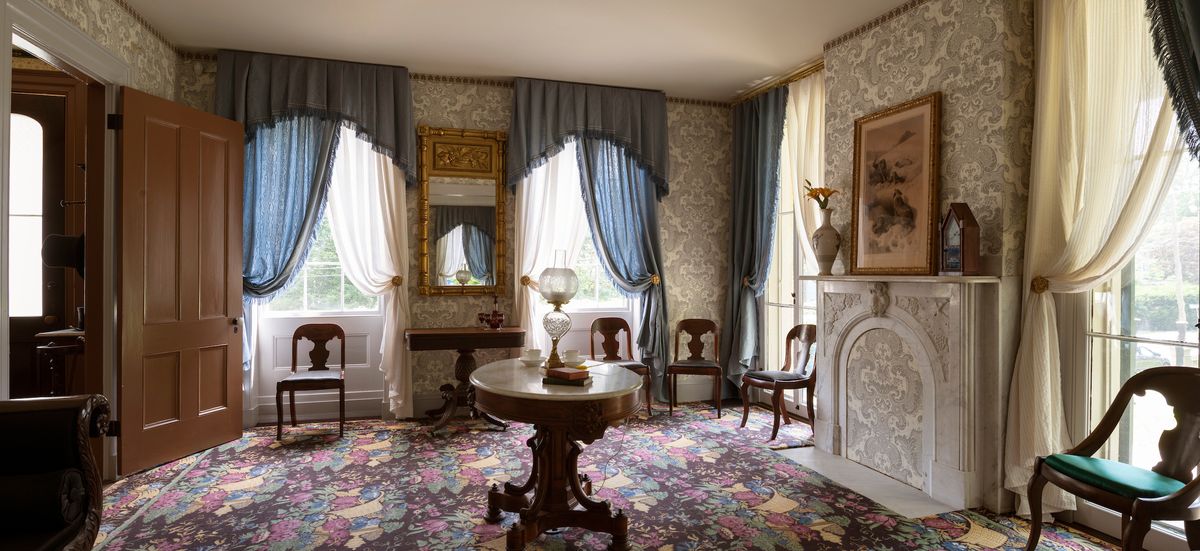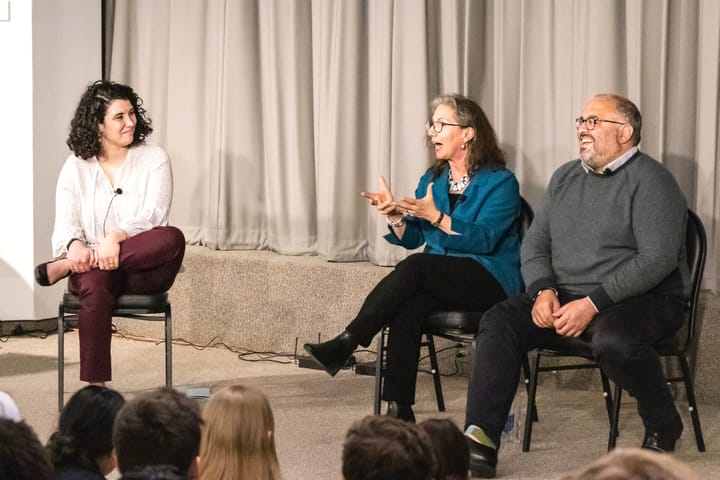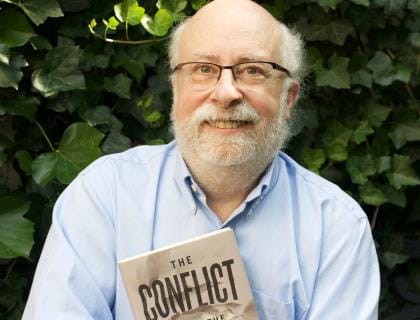Following more than two years of closure, the newly refurbished Emily Dickinson Museum, transformed through a recent restoration project, reopened its doors on Aug. 16.
After over two years of closure, the Emily Dickinson Museum opened up its newly refurbished doors on Aug. 16.
Comprised of two houses — the Dickinson Homestead, Emily Dickinson’s home for most of her life, and The Evergreens, a home built for her brother’s family upon his marriage — the museum has completely transformed since its closing in March 2020 through a restoration project headed by Executive Director Jane Wald.
Though The Evergreens is not yet open to the public to allow for continued preservation and stabilization work, tours of the Homestead, updated to incorporate a new interpretive framework that guides how the museum tells the Dickinsons’ story, have resumed.
“I’ve had folks who have been attending our virtual programs for the whole pandemic but had never been here before,” expressed Brooke Steinhauser, program director of the Emily Dickinson Museum. “And there’s nothing quite like being in this space with people.”
Steinhauser shared that the new tour aims to share more of Emily Dickinson’s voice and language, walking visitors through the poet’s life in the context of the world around her. Acknowledging her privilege growing up within a wealthy, white family in Amherst, it details the lives of all those who lived and worked in the house, including the family’s domestic servants.
The tour is also mindful about what stories matter to contemporary audiences and the messages it shares, evoking how this privilege afforded her the sanctuary to produce her voluminous poetry and leave the legacy she did.
Stepping into the entrance after two years, visitors will find the space is much more vibrant than before. What was once embodied by plain cream finishes is brought into full color with bright wallpapers and carpeting. The simple, almost dull, ambiance that once filled the parlor has been replaced with the liveliness of the past — the 1800s Dickinson homes were filled with visitors constantly drifting in and out, their estate known to be a social center of the town. Now, visitors of the museum can see the poet’s home restored closely to how it appeared during the time she lived and wrote there.
Emily Dickinson’s bedroom — where the bulk of her work was written — was restored pre-pandemic, in 2015, after the ceilings collapsed. The falling plaster proved to be a blessing when a small bit of wallpaper was found amid the debris; from it, the museum was able to reproduce the rose wallpaper now plastered on the bedroom’s walls. The space was then furnished with her bed, a replicated writing desk that overlooks the center of town, and other decor and objects that would have been in the room when she lived there.

The replicated wallpaper lining the space and the curation of pieces throughout the room helps visitors better understand what surrounded the poet when she wrote. “Dickinson forged her unique personal vision and her revolutionary poetic voice here in this place,” Steinhauser said. The significance of this restoration, and the way it was carried out, exemplifies that of the rest of the house’s restoration over the course of the pandemic.”
The restored Homestead is furnished with period-accurate Dickinson pieces from the museum’s collections and set pieces from “Dickinson” of Apple TV+ — the show’s production team worked with the museum throughout its filming to portray the family’s story as authentically as possible, and gifted to it their antique 19th century sets, props, and costumes post-filming. In each room’s formation, every detail — from the selection of items to their placement in the space — was carefully thought out. Rooms were designed using hints to the space’s appearance in Emily Dickinson’s poetry and the family’s letters.
“I think it’s actually kind of wonderful that this year, the Homestead is opening, and there’s still work being done on systems in The Evergreens — there gets to be this slow unfolding,” expressed L. Stanton Williams 1941 Professor of American Studies and English Karen Sanchez-Eppler, who has been involved with the Dickinson Museum since 1990 and is a long-time member of its board of governors.
She spoke of the reopening with pride and wonder at the scale of what the museum accomplished in such a short time, highlighting her appreciation for the new tour. Back when she held her role on the museum’s board, it took around two years to fund the replica of Dickinson’s signature white dress that is now displayed in her bedroom. Now, in the same amount of time, the museum has been able to restore the entire Homestead, and implement the comprehensive interpretive plan — among a slew of other projects that have been carried out simultaneously.
A new addition to the greens of the museum is a garden filled with flowers that Dickinson grew or wrote about. Started after the pandemic’s onset and still in the works is a project aiming to rehouse and catalog the museum’s full collection containing an estimated 10,000 objects — ranging from chairs, to doll clothing, to Edward Dickinson’s wallet. A database containing photographs and descriptions of the full collection will be made publicly available upon completion of the project, set to occur about a year from now.
The museum also plans to reconstruct the Dickinsons’ carriage house and, later, the barn that once stood behind the Homestead. The museum also hopes to convert The Evergreens' carriage house into a study center that Amherst students will be able to go to during the week.
Over the course of the pandemic, the museum pivoted to the virtual world and connected with a global audience it wasn’t aware was so prevalent. “The last two and a half years, prior to reopening, we pivoted to this whole virtual world,” shared Steinhauser. “And we found that the world was really ready and waiting for us.”
Alongside the museum’s physical reopening, it plans to continue its virtual programs and maintain an accessible website where anyone can learn about Dickinson, the museum, and upcoming programs. On the website, visitors can also engage in a virtual exploration of the museum, containing images and videos of rooms in both the Homestead and The Evergreens, and text detailing pertinent people, objects, and events in the Dickinsons’ lives.
Steinhauser spoke of the museum’s global audience and the day of the reopening, sharing that a group of young people from Mexico and Hungary came together to be there for it.
“We really are a place of connection,” she said. “To connect people to Dickinson, but also to each other … Emily Dickinson touches people in places we’ve never imagined. And welcoming them back both in person and continuing to engage them virtually, those are the things that I’m really excited about.”






Comments ()